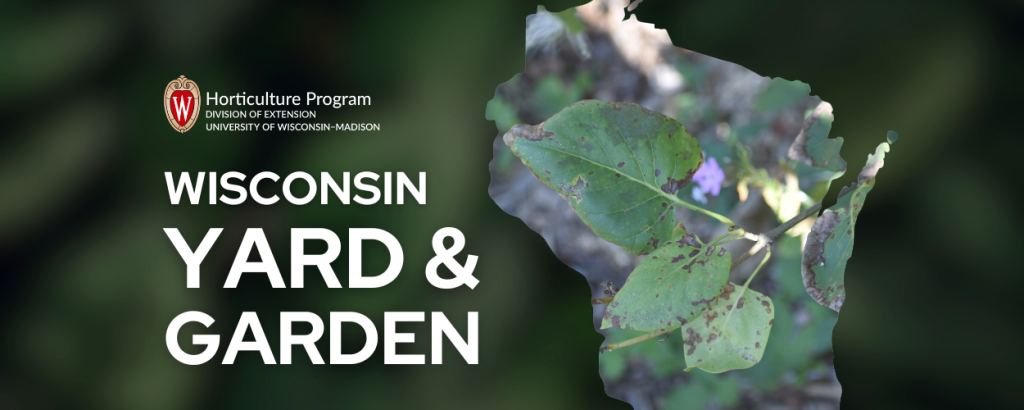
This article was originally published for the Northwoods Yard and Garden column by Extension Iron County.
Have you noticed your lilac looking pretty ragged the last month or so? It is probably Septoria leafspot disease, which is common throughout the state this season.
Every growing season brings different challenges. In 2023, the drought was the biggest issue. This year plentiful rain has been great for plants but also favors certain types of disease, especially fungal diseases infecting plant foliage. In previous columns I have discussed apple scab and anthracnose, both common foliar diseases this season. Septoria is similar.
Irregular brown spots and lesions appear on the lilac leaves, with some leaves turning entirely brown and then dropping off the plant. Typically, the lower part of the shrub is affected first and shows the most extensive damage. Septoria will work its way up the plant, with increased foliage becoming infected. Leaves in the upper part of the plant will be green or partially green.
There are two reasons behind this type of disease development. First, the lower portion of the shrub canopy will stay wet longer, so is more favorable for fungal disease development. We see the same scenario with tomato leaf diseases. Second, fungal spores will splash off the soil and lower foliage onto leaves above, encouraging the spread of disease.
There are three disease management strategies for Septoria on lilac. Right now, sanitation tops the list. As brown leaves accumulate under your lilac, rake them up and remove them from the site. Burning them is an option; otherwise completely bury them. They can be composted but make sure the pile heats up to 130-140 degrees to ensure the pathogen is killed.
The second management option is pruning shrubs to improve air circulation, making a less favorable environment for disease. Do not prune lilacs this fall, however, as flower buds are already set on twigs for 2025. Ideally prune lilacs right after they complete blooming next season.
The third management option is fungicides. Fungicides protect healthy foliage but will not cure infections that have already occurred, so it is too late this season. Fungicides containing chlorothalonil would need to be applied just as buds start to break open next spring. Conditions may be entirely different as compared to this year, so it difficult to predict disease status in 2025.
If applying fungicides, read and follow all label directions. Compete coverage of leaves is essential. In most cases, following the cultural management options listed above is the better option to manage this disease. If Septoria becomes a chronic issue, then perhaps consider fungicides.
You can learn about Septoria leafspot and its effects on other plants from the UW Plant Disease Diagnostic Clinic.

About the Author
Bruce Spangenberg is a Horticulture Outreach Specialist with UW-Madison Division of Extension. Get answers to your lawn, landscape and garden questions anytime at “Ask Your Gardening Question.”




